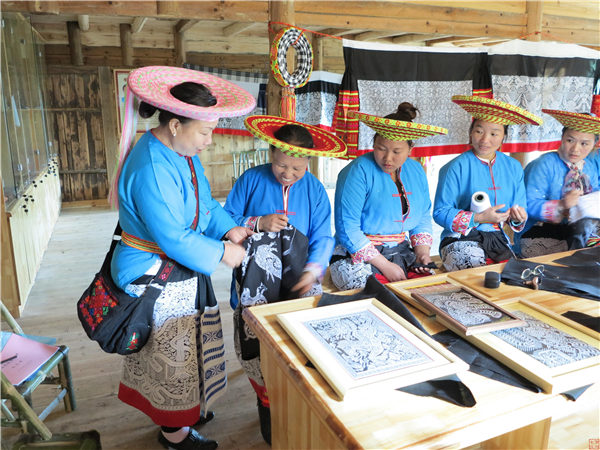

The unique sewing skills and designs of the Huayao people are helping mountain villages in Hunan overcome poverty while breathing new life into their culture, Li Yingxue and Feng Zhiwei report.
Almost every Huayao woman can do tiaohua, or cross-stitching, and each piece embodies its maker's own understanding of, and reflections on, life.
The Huayao people are an ancient branch of the Yao ethnic group. Huxingshan Yao town is home to around 7,000 Huayao people, but it was also one of the most impoverished and remote towns in Longhui county, Shaoyang, Hunan province.
For the best part of a decade, a team from Hunan University has been helping Baishuidong village in the town to overcome poverty and inherit the cross-stitching skill by promoting its cultural and creative products and boosting local tourism, trying to put the small village on the map.
Yang Min, the head of the town, says, "The goal has changed from poverty alleviation to overcoming poverty, which inspires our villagers, and it is the most precious treasure that Hunan University leaves us."
There is no written language for the Huayao people who live in remote mountain settlements, so it's difficult to save its ethnic culture.
The skill of the Huayao's cross-stitch work, which has a history stretching back a thousand years, fills the gap to some extent-it has played an important role in inheriting Huayao culture and recording the history of the Huayao people.
However, the new generation of Huayao women yearn for more urban fashions. Some of them do not wear their traditional outfits anymore and there is a lack of passion for the needlework.
Making a set of traditional Yao clothes requires heavy needlework-a skirt, alone, needs at least 300,000 stitches and it takes a master of the craft between six and 12 months to complete.
Many Huayao women shy away from the craft because of the complicated needlework, and another challenge for Huayao cross-stitch work is that it's not easy to get onto the market.
The poverty alleviation team from Hunan University began helping in Baishuidong village in 2012. When they first arrived, they eyed the Huayao cross-stitch work as a potential revenue stream.